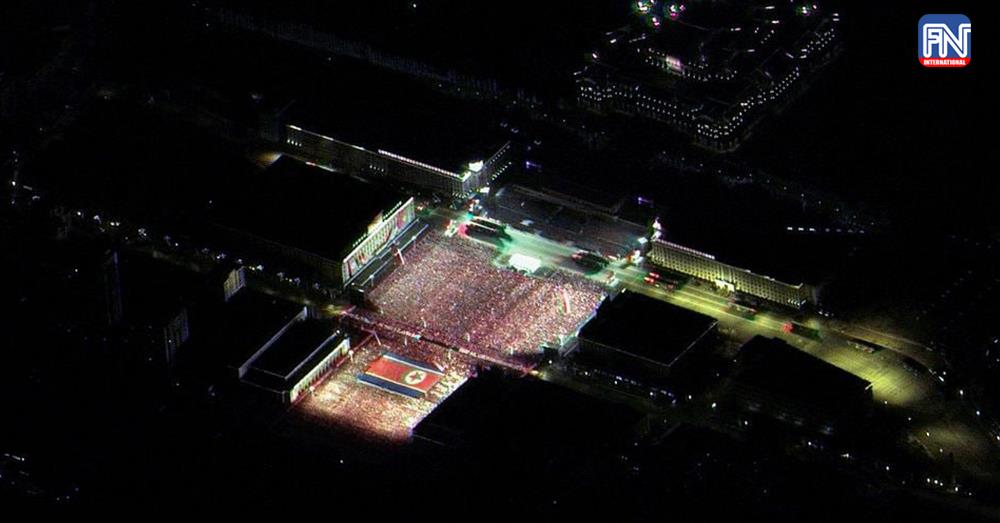SEOUL, Feb 9 (Reuters) - Nuclear-armed North Korea unveiled what could be a new, solid-fuel intercontinental ballistic missile (ICBM) during a nighttime parade, analysts said on Thursday, citing commercial satellite imagery.
North Korea held the widely anticipated nighttime military parade on Wednesday, an event expected to showcase the country's latest weapons to mark the founding anniversary of its army.
The country's state media had not reported on the parade as of Wednesday night, but satellite imagery from the U.S.-based firm Maxar Technologies showed military vehicles and crowds in Pyongyang's Kim Il Sung Square.
Among the systems on display were the country's largest-yet ICBM, the Hwasong-17, followed by what some analysts said could be a new solid-fuel ICBM.
"Following the apparent Hwasong-17 ICBM pairs are four unidentified but apparently similarly sized canisterised systems," Joseph Dempsey, a defence researcher at the International Institute for Strategic Studies, said on Twitter.
Ankit Panda of the United States–based Carnegie Endowment for International Peace said the canisterised ICBM might be one seen during a 2017 parade, and which has so far not been tested.
Most of the country's largest ballistic missiles use liquid fuel, which requires them to be loaded with propellant at their launch site - a time-consuming process.
Developing a solid-fuel ICBM has long been seen as a key goal for the country, as it could make its nuclear missiles harder to spot and destroy during a conflict.
It is unclear how close the suspected new missile could be to testing. North Korea has sometimes displayed mockups at the parades.
The country has forged ahead with its ballistic missile programme, launching larger and more advanced missiles than ever before, despite United Nations Security Council resolutions and sanctions.
